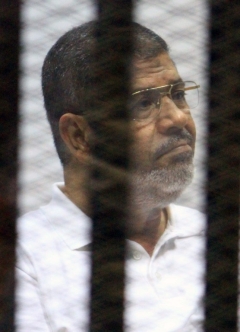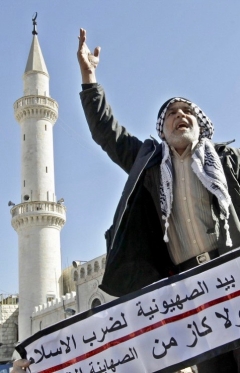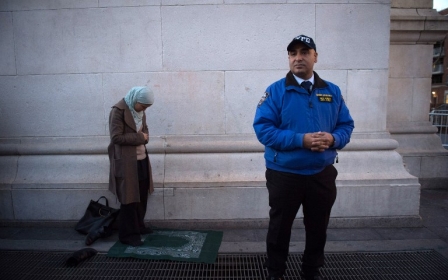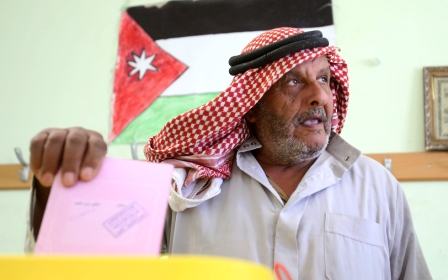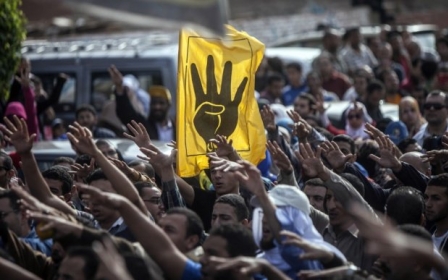The Muslim Brotherhood is an Arab issue, not a US one
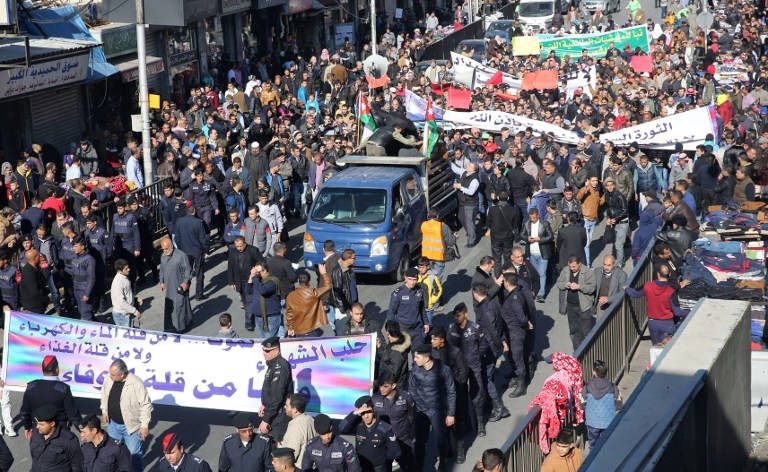
The Muslim Brotherhood was born in Egypt in 1928 as an Islamic da’wah association, which means preaching Islam to Muslims. It was not the first organisation of its kind, nor was it the last. Egypt was not the only majority Muslim country to witness the birth of such civil associations, whose primary concern is to work for the preservation of the values, rituals and heritage of religion.
Islamic civil societies and associations date from the second half of the 19th Century, starting from Istanbul, Cairo, Damascus, Tunis, and all the way to Delhi and Hyderabad.
The Brotherhood is the most pluralistic socio-political current in modern Arab history
The driving force behind these institutions, which followed the model of similar Western associations, were the shock waves caused by modernisation, whether at the level of the collapse of historic consensus within Islamic societies or the accelerating Western influences in culture, politics, arts and lifestyles.
Within a relatively brief period of time, an increasing number of Muslim communities realised that Islamic heritage was being threatened and that Islam’s standing within the public domain was shrinking.
Some of these societies and associations focused on education, printing and publishing. Others concentrated on da’wah activities, while others focused on creating scholarly leagues whose aim was to preserve what remained of status and role for these scholars in public life.
By the beginning of the 20th Century, historic Islamic cities witnessed the emergence of dozens, perhaps even hundreds, of such societies and associations, including the Eastern Society, the Muslim Youth Society, Association of Levant Scholars, Ahl Al-Hadith Society, Ansar Al-Sunnah, Islamic Urbanisation and Shari’ah Society.
In its early days, the Muslim Brotherhood Association was no different from other societies in Egypt, Syria or Tunisia. However, one thing in particular made the Muslim Brotherhood more distinct and enabled it to spread far and wide within Egypt as well as outside it and to live on at the heart of Islamic socio-politics.
The Muslim Brotherhood was more comprehensive than others in its vision of Islam and of the needs of society. It was more dynamic and sensitive to Egypt’s causes, such as the constitutional state, and towards Muslim world causes such as the Palestinian issue and the question of the identity of the Arab Maghreb Muslims.
Sensing their increasing influence within Egyptian society, a group of Islamists and Arabists around the young Egyptian king Farouk, including Sheikh Al-Maraghi, Aziz Ali Al-Misri and Ali Maher, sought to bolster their ties with the Brotherhood with the aim of balancing out the influence of the liberal nationalist Al-Wafd Party.
Paradoxically, the highest Egyptian state institution at the time encouraged the Muslim Brotherhood to engage in politics. However, in view of the expanding circle of interest exhibited by the Muslim Brotherhood in Egypt in the 1930s, it could be argued that it was heading toward engaging in politics independently of the initiative of the Arabist Islamists around Farouk. Yet, the activism and durability of the Brotherhood did not depend on what was happening in Egypt alone, but rather on two of its main characteristics.
First, the political history of the group was not born out of a predetermined plan or from a plain ideological conception. The Brotherhood’s view of the world, of Muslim societies, of themselves and of their role changed over time in response to developments that accompanied their procession and the objective contexts that surrounded them.
There exist mystic influences within the Brotherhood. There are also Salafi reformist influences and unlimited jurisprudential plurality.
The second reason for its growth is related to the Brotherhood’s capacious view of Islam, which enabled the movement to turn into a large tent capable of encompassing a multitude of visions that are quite often diverse and different.
In one way or another, it can be said that the Brotherhood is the closest expression of modern Islam to the Sunnis and to the various spectrums in jurisprudence, in politics and in theology that were embraced by them over the centuries. There exist mystic influences within the Brotherhood. There are also Salafi reformist influences and unlimited jurisprudential plurality.
There are also varying levels of openness to abstract Western concepts and Western notions of political sociology.
These two characteristics of the Brotherhood allowed the group to transform into an extensive current and to adapt to diverse and pluralist circumstances as well in response to huge pressures. In this way, it spread to most of the Arab countries and was able to adapt to the requirements of each state. With the passage of time and in response to the different problems it had faced, it was able to develop its programme.
Pluralist currents
The Brotherhood comprises diverse groups of Muslims: graduates of the most modern universities, including Western universities; those with modest levels of education; urban as well as rural affiliates; writers, journalists and academicians; labourers and peasants; businessmen and theologians; the highly politicised and the apolitical. This is the most pluralistic socio-political current in modern Arab history.
For the past century of its existence, the Brotherhood’s vision progressed constantly. It started as a community that focused purely on religious missionary concerns but progressed to become a political Islamic group. It shifted from a group that was close to the palace into a main partner in the coup d’état of the Free Officers and the birth of the Republic; from da’wah to a constitutional state, to espousing a pluralistic democratic programme; from Sharia implementation slogans to upholding the will of the majority slogans.
Huge popular current
Despite the spread and expansion of the Brotherhood current into most of the Arab states as well as among Arab migrant populations around the world, the Brotherhood managed, by virtue of its (controversial) recognition of the modern Arab state and its sovereignty, to adapt to different circumstances and contexts, whether by joining government coalitions, or by resisting foreign occupation, or by adopting the stance of opposing ruling minorities, or by siding with popular uprisings and revolutions against despotism and in support of freedom and upholding the values of human dignity.
The Brotherhood is not a party or a sect or a group. Therefore, it would not be easy for the US administration to ban it or designate it a terrorist organisation. The Brotherhood is a huge popular current, a historic phenomenon that should be viewed within a context that is overwhelmed by anxiety, division, turbulence and hope, it is the context that formulated the modern Middle East and decided its fate.
The Brotherhood today is more influential, bigger, and weightier in the balance of power than it was before the campaigns designed to crush it
If the objective is to liquidate the group, the Brotherhood will not be eliminated by being designated as a terrorist organisation by the US administration. The US is certainly the most powerful state in the world today. It is the most influential when it comes to the world’s resources and to the human community. Yet, the Brotherhood, throughout its long history, has passed through tougher circumstances than one that might be generated by a US designation of the group.
It has been subjected to pressures heavier than the campaign to which they are being subjected now. And it is not over. Should its history be viewed from a longer-term perspective, even if just a little longer, it is certain that the Brotherhood today is more influential, bigger, and weightier in the balance of power than it was before the campaigns designed to crush it.
The US administration should think, before it makes this decision, of the potential impact it would have on bolstering radical discourse in the Arab world and the loss of hope in building balanced and fair relations between the Muslims and Western powers.
Nevertheless, what is certain is that designating the Muslim Brotherhood as a terrorist organisation does not mean much to the American voter who sent Trump the White House. The majority of voters in Wisconsin or Ohio have never ever heard of the Brotherhood.
If the objective is to liquidate the group, the Brotherhood will not be eliminated by being designated as a terrorist organisation by the US administration.
One or two Arab states have sensed an opportunity in the new administration’s xenophobia and are using their leverage to achieve objectives that are connected to their struggle over the future of the Arab world. This has nothing to do with the future of the US or its interests.
In a scenario that is similar to the pressures on former British prime minister David Cameron to designate the Brotherhood as a terrorist organisation (he responded by creating an inquiry to study the impact of the Brotherhood on British interests), these same Arab states are endeavouring to achieve the same objective by exploiting the fears and biases of the new US administration.
This is an Arab problem and not an American one. The sooner Trump’s administration realises this, the better it will be for the future of relations between the US and the Islamic world.
- Basheer Nafi is a senior research fellow at the Al Jazeera Centre for Studies.
The views expressed in this article belong to the author and do not necessarily reflect the editorial policy of Middle East Eye.
Photo: Jordanian supporters of Muslim Brotherhood chant slogans and wave placards in Amman last year during protest in solidarity with people of Aleppo and against Syrian regime (AFP)
This article is available in French on Middle East Eye French edition.
New MEE newsletter: Jerusalem Dispatch
Sign up to get the latest insights and analysis on Israel-Palestine, alongside Turkey Unpacked and other MEE newsletters
Middle East Eye delivers independent and unrivalled coverage and analysis of the Middle East, North Africa and beyond. To learn more about republishing this content and the associated fees, please fill out this form. More about MEE can be found here.



